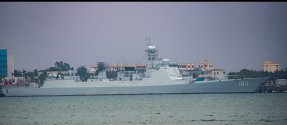Hmm. Shouldn’t the seeker have a transparent window? The bump appears to me as an extension of the fuselage.the little bump on the ventral side of the missile at the front.
You are using an out of date browser. It may not display this or other websites correctly.
You should upgrade or use an alternative browser.
You should upgrade or use an alternative browser.
052C/052D Class Destroyers
- Thread starter Jeff Head
- Start date
Hmm. Shouldn’t the seeker have a transparent window? The bump appears to me as an extension of the fuselage.
I don't understand your question.
The ImIR seeker window will be facing forward.
We are seeing the missile from the side. Why do you think we should be able to see the seeker window from this perspective?
And yes -- the bump is an extension from the fuselage.
An extension that is almost definitely for an additional EO/ImIR seeker.
I am assuming you know what the regular/existing YJ-62 looks like, so I would be curious as to what you believe this extra "extension of the fuselage" could possibly be.

The YJ-83 family also has a similar upgrade/variant with a similar dual mode seeker.

I think the angle in the first photo is such that we would be able to identify the “seeker” if the resolution was better.I don't understand your question.
The ImIR seeker window will be facing forward.
We are seeing the missile from the side. Why do you think we should be able to see the seeker window from this perspective?
And yes -- the bump is an extension from the fuselage.
An extension that is almost definitely for an additional EO/ImIR seeker.
I am assuming you know what the regular/existing YJ-62 looks like, so I would be curious as to what you believe this extra "extension of the fuselage" could possibly be.

The YJ-83 family also has a similar upgrade/variant with a similar dual mode seeker.

Many IR seekers have either wide angle hemispherical domes or faceted windows that can easily be identified from a side view, but clearly not so on the YJ-83. Thanks for pointing that out.
If your optic system is IR-only, no. Most materials that are transparent to visible light actually absorb a lot of IR light. If your optic system is IR only, you go with a Germanium window. Germanium is opaque to visible light but it is very transparent to IRHmm. Shouldn’t the seeker have a transparent window? The bump appears to me as an extension of the fuselage.
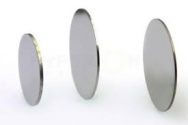
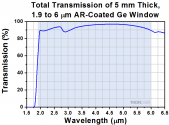
The choice of the window material will depend on the operating wavelength of the infrared detector. Another common material is sapphire glass and it is rather transmissive in the visible spectrum:If your optic system is IR-only, no. Most materials that are transparent to visible light actually absorb a lot of IR light. If your optic system is IR only, you go with a Germanium window. Germanium is opaque to visible light but it is very transparent to IR
View attachment 99009View attachment 99008
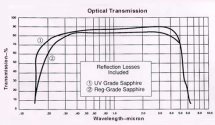
The F-35 EOTS windows are transparent to visible light:
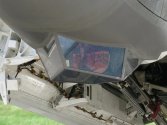
Although my original observation was about the absence of a wide angle dome or faceted windows common to gimbaled IR/IIR seekers.
The EOTS is mostly a targeting pod. It has visible spectrum cameras. Dome shape would be dictated by the field of view required. If it is just a counter-measure to decoys and EW, then a narrow field of view is good enough.The choice of the window material will depend on the operating wavelength of the infrared detector. Another common material is sapphire glass and it is rather transmissive in the visible spectrum:
View attachment 99010
The F-35 EOTS windows are transparent to visible light:
View attachment 99011
Although my original observation was about the absence of a wide angle dome or faceted windows common to gimbaled IR/IIR seekers.
by78
General
The choice of the window material will depend on the operating wavelength of the infrared detector. Another common material is sapphire glass and it is rather transmissive in the visible spectrum:
View attachment 99010
The F-35 EOTS windows are transparent to visible light:
View attachment 99011
That's not the seeker window per se. It's more of a protective cover made of sapphire to shield the EOTS assembly from the elements and aerodynamic forces, and to mitigate its radar returns.
Here's an image of the EOTS assembly that sits inside the protective cover. Note the actual seeker windows on the bottom of the assembly.

Last edited:
How many 052Ds are currently being built at Jiangnan?


